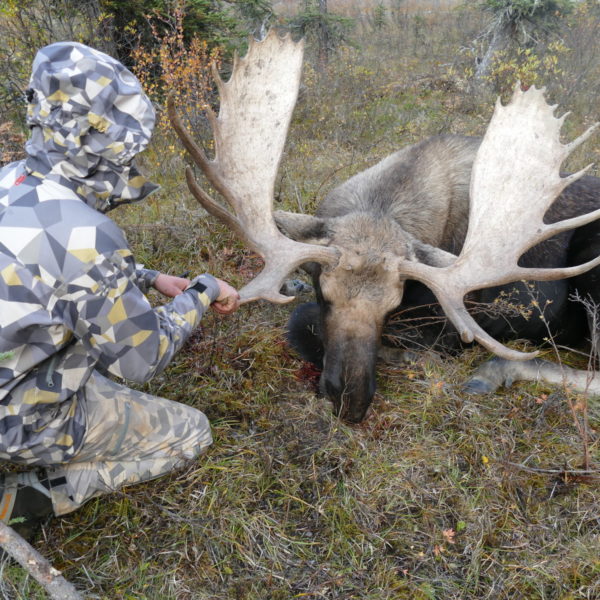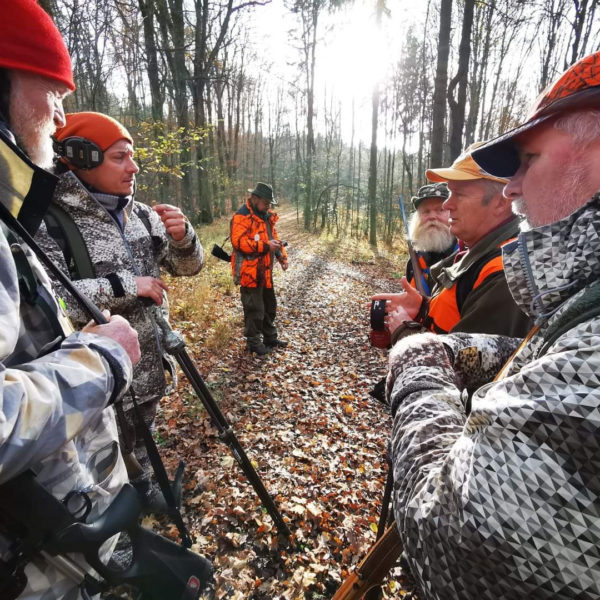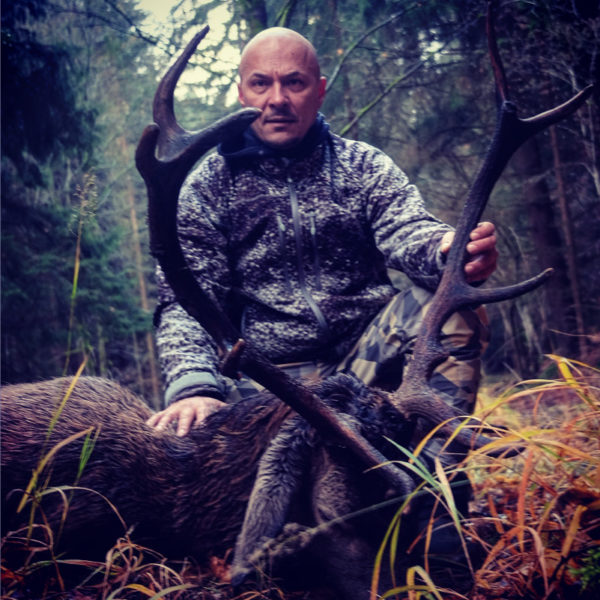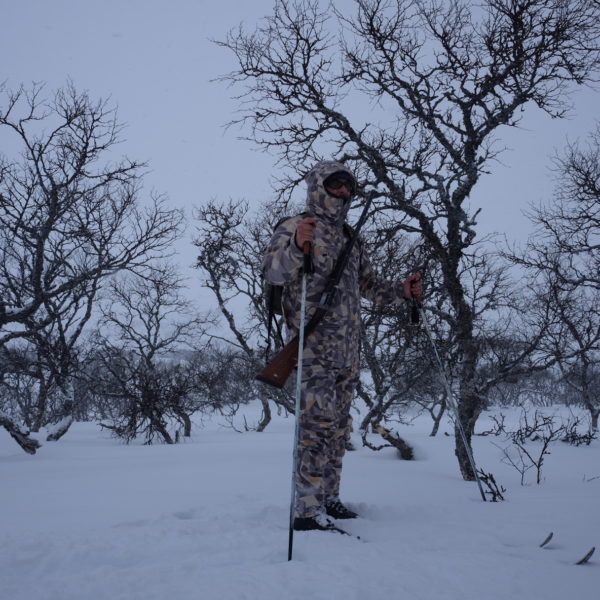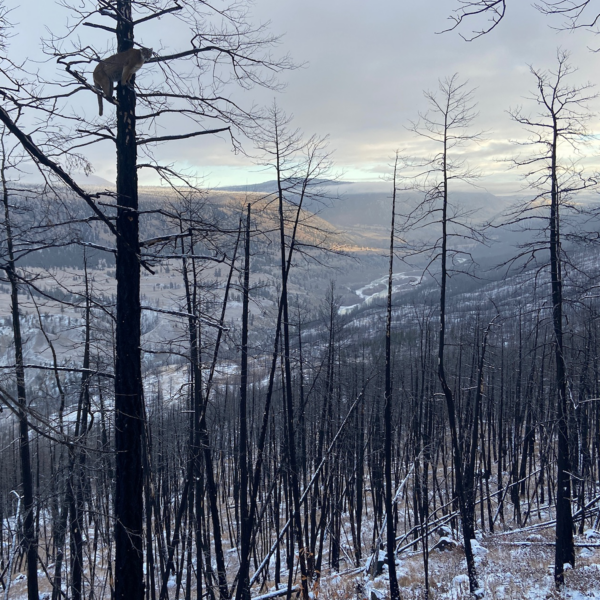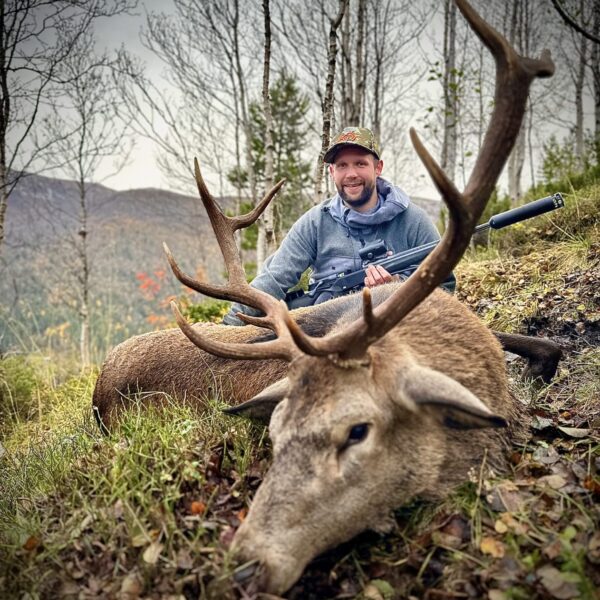Innovation and engineering. Ultralight at 2680g – (85 to 130litre.)
Legend has it that Norwegians are born with skis on their feet. Part of the “mothers’ milk” of growing up and living in Norway is skiing. The other part – is you wear a back pack, from the day you start at kindergarden to the day you take your last walk across the mountains. Every Norwegian has at least one -if not more, back packs and pairs of skis in their gear collection.
You can go straight to product page here (link) With that in mind, it was a daunting task we set ourselves – to develop a class leading back pack, ultralight, ultra strong and flexible solutions.
With that in mind, it was a daunting task we set ourselves – to develop a class leading back pack, ultralight, ultra strong and flexible solutions.
We recognized that carbon fiber was a material that could help us solve issues with tencile strength at hugely varying temperatures – while adding to the possibility of reducing weight.
Why is Carbon Fiber so special?
 Carbon Fiber can be up to ten times stronger than steel and five times lighter. These are properties we wanted for our frame. Developing the frame was somewhat trial and error, there is a distinct “point of no return” where designs that are poorly engineered, results in too much flexibility or even that the frames fracture under heavy load. After many ideas of both X shaped load frames and internal H frames – we landed on a design based on a similar construction used in the early part of the last century made from wood. The idea is a plate, anatomically shaped to fit the bearer with incisions – or slits – which are the anchor or fastening points of the harness and pack. In the original wooden versions used many years ago, they used leather hoops to fasten equipment or meat by creating a loop lock.
Carbon Fiber can be up to ten times stronger than steel and five times lighter. These are properties we wanted for our frame. Developing the frame was somewhat trial and error, there is a distinct “point of no return” where designs that are poorly engineered, results in too much flexibility or even that the frames fracture under heavy load. After many ideas of both X shaped load frames and internal H frames – we landed on a design based on a similar construction used in the early part of the last century made from wood. The idea is a plate, anatomically shaped to fit the bearer with incisions – or slits – which are the anchor or fastening points of the harness and pack. In the original wooden versions used many years ago, they used leather hoops to fasten equipment or meat by creating a loop lock.
And then we added a little Kevlar.
Once we had the “architecture” of the frame – we wanted it to have more supportive strength. The CF frame has Kevlar rebar – much the same way as concrete is reinforced.
The result is a frame that is both flexible and exceptionally strong, -you can put your frame on the edge of the pavement and drive up it with a 4×4 truck and the frame will flex without snapping.
Our frames are designed to withstand heavy loads, twisting, pull and compression forces – they are also designed to work in such a manner that assembly of the pack, the harness and other accessories should be intuitive and simple. This reduces costs in manufacturing but also provides a “base frame” from which we can develop alternate designs and pack volumes without re-engineering the frame itself for each product.
The Pack.
Once the frame was developed, tested and proven to function in the field as intended, the next issue was the pack.
Why 85 litres. (8500cm3). Why not 100 or 60.?
This is a choice made by us from our experiences as hunters. As young men we carried far more than we should have and far too much weight on the way in to the mountains (rather than on the way out). Back in the day, we used 130 Litre packs. But also, back then, a good tent took up 25% of the pack, sleeping bag another 40% and the rest was crammed with what we believe we needed. At the end of the day, if you have a 130L “super pack”, you will always fill it with more than you need. In todays world, gear is much lighter and much more compact, (your tent may be as light as 1,6kg or less) – your sleeping bag can be super warm, super light and with very little volume. All these technological advances in gear are contributing factors that mean you don’t Need a pack bigger than 85L.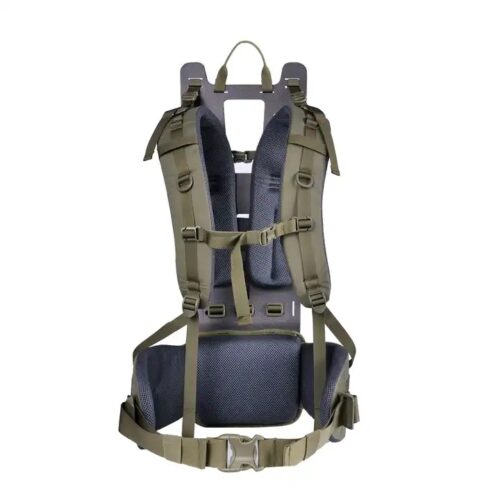
Load-bearing frame without the backpack weighs 1.5 kg. Adjustable height and width on the harness.
So what Do you need in a mountain hunting pack?
Besides the technical aspects such as flexibility around the hips, torque stability, comfort and so on – you need to be able to pack in and out without emptying the entire pack. Hence the outside zipper which gives you quick and easy access to all the contents in the bag when the pack is lying on the ground.
Outside pockets, intentionally designed to fit all known standard models of spotting scopes.
Hydration pack access and pocket, quick release for your rifle, anchor points for your bino bag.
A meat load out shelf. Err.. what? So, – it’s a shelf, between the pack and the frame.

The freight shelf has a capacity of 45L (here the pack is removed entirely)
You can release the pack from the frame, there are buckles both under and on the top of the pack that release the tension. The frame then slips out of garage pockets on the pack. Re-attach the buckles at the bottom and swap the buckles at the top. In principle: harness attached to frame, frame attached to pack. That gives you a shelf between the frame and the pack.
The main compartment of the backpack is 80L. Front pockets add 5L of capacity. The freight shelf has a capacity of 45L. Maximum capacity: 130L. Dry weight: 2680g with the frame – excluding the quick-release mechanism for weapons.
You can watch an instruction video here describing the various capabilities of the pack.
Is there a compromise?
Yes, at some point there always is. Finding the X point between, strength, weight and volume will always be a compromise on something. This means that padding could be thicker, hip belts even longer. frames thicker and so on. We believe we have a achieved a good compromise between the differing aspects that need to be taken into account. What it does mean, is that once you reach loads exceeding 35 kilos, depending on user, you sometimes wish for more padding at the base of the back. It’s very rare that users carry loads such as this – and when they do, it’s almost always moving meat out of the mountains. A good idea – when needing to carry huge loads – is to use a pad from a sleeping mat and place it or tape it in between the frame and the rump/butt padding. This gives you a little more clearance and a little more comfort. That being said, of the 500+ packs we have sold to date, this has only been reported back by users on three occasions. Our belief is that this is one of things that can be put down to “user individual traits”. We are all built differently. By that we mean that people have differing ratios between spine length, hips, shoulder, legs and so on – so on a rare occasion things like this happen. On the other hand – we have also been told by not few, but many user, that this is outright the best pack in the class that they have ever used – now thats saying something.
What is the difference between the camo packs and the solid colour pack?
Very little, in fact, they are more or less identical. However, the camo packs are first and foremost designed for mountain hunters. They utilize our scientifically developed camouflage patterns, the fabric is Not UV treated and has a slightly different treatment than the solid colour pack. The camo packs also have features such as the Recco signal reflector. Minor details if you are looking for a world class pack, – a little more if you are specifically looking for these features in your hunting pack.








